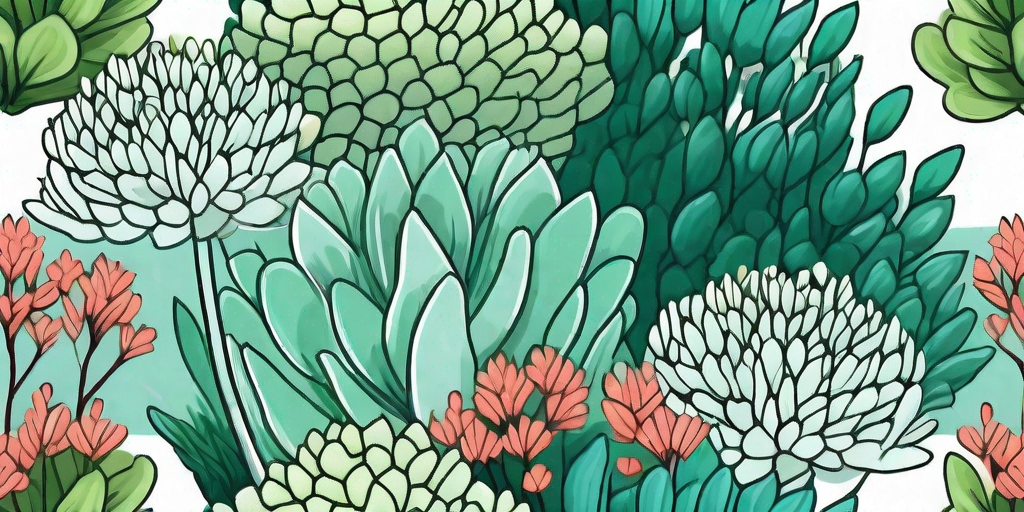
Are you tired of plants that demand more attention than a toddler? Do you want a garden that's as low-maintenance as a pet rock, but a lot prettier? Well, my friend, it's time to meet Sedum, the rock star of the garden world. This hardy little plant is about to become your new best friend.
What is Sedum?
Sedum, also known as stonecrop, is a genus of over 400 species of flowering plants. They're known for their ability to thrive in poor soil and harsh conditions, much like a rock star on a world tour. But unlike your typical rock star, Sedum won't trash your garden or demand a bowl of M&M's with all the brown ones removed.
These plants come in a variety of shapes, sizes, and colors, from low-growing ground covers to tall, upright varieties. They're like the Swiss Army knife of the plant world - there's a Sedum for every situation.
The Many Faces of Sedum
With so many species to choose from, you're sure to find a Sedum that fits your garden's style. Some popular choices include:
- Sedum 'Autumn Joy': This variety lives up to its name with clusters of pink flowers that turn a rich, rusty red in the fall.
- Sedum 'Blue Spruce': This ground cover variety has blue-green needle-like leaves and yellow flowers. It's like a Christmas tree and a sunflower had a baby.
- Sedum 'Angelina': This variety is a real show-off with its bright yellow-green foliage. It's like the plant version of a highlighter pen.
Why Choose Sedum?
Aside from its rock star status, there are plenty of reasons to invite Sedum into your garden. For starters, it's incredibly low-maintenance. Sedum is drought-tolerant, which means it won't throw a tantrum if you forget to water it for a while. It's also resistant to pests and diseases, so you won't have to play nursemaid to this plant.
But the benefits don't stop there. Sedum is also a great choice for attracting pollinators to your garden. Bees, butterflies, and other beneficial insects love Sedum's nectar-rich flowers. So not only will you have a beautiful garden, but you'll also be doing your part to help the environment. Talk about a win-win!
Low Maintenance, High Impact
One of the best things about Sedum is that it provides year-round interest. In the spring and summer, its succulent leaves and vibrant flowers steal the show. In the fall, the foliage changes color, adding a splash of autumnal charm to your garden. And in the winter, the dried flower heads provide architectural interest, especially when dusted with snow.
And did we mention that Sedum is practically indestructible? This plant can survive in almost any soil, as long as it's well-drained. It can handle full sun, partial shade, and even the occasional neglect. It's the perfect plant for those of us who don't have a green thumb, or who simply have better things to do than pamper a plant all day.
How to Grow Sedum
Now that you're sold on the idea of adding Sedum to your garden, let's talk about how to grow it. Don't worry, it's as easy as falling off a log. Or a rock, in this case.
First, choose a spot in your garden that gets at least six hours of sunlight a day. Sedum loves the sun, but it can also tolerate some shade. Next, make sure the soil is well-drained. Sedum doesn't like wet feet, so if your soil is heavy clay, you might want to amend it with some grit or sand.
Planting and Care
When it comes to planting Sedum, you have a couple of options. You can buy plants from a nursery, or you can propagate them from cuttings. To propagate Sedum, simply snip off a piece of the plant, let it dry for a day or two, then stick it in some soil. It's like making a clone of your favorite rock star, only less creepy.
Once your Sedum is planted, it's pretty much a case of set it and forget it. Water it occasionally, especially during dry spells, but don't overdo it. Too much water is worse than not enough for this plant. And while Sedum doesn't require regular feeding, a bit of slow-release fertilizer in the spring can give it a boost.
FAQs
Is Sedum invasive?
Some varieties of Sedum, such as Sedum acre, can be aggressive spreaders. However, they're generally not considered invasive. If your Sedum starts to take over, simply trim it back or remove some of the plants.
Can Sedum grow indoors?
While Sedum is typically grown outdoors, some varieties can be grown as houseplants. Just make sure to provide them with plenty of light and well-drained soil.
Is Sedum toxic to pets?
Some species of Sedum can be toxic if ingested in large quantities. If you have pets that like to nibble on plants, it's best to keep Sedum out of their reach.
Conclusion
So there you have it, folks. Sedum: the rock star plant that's as low-maintenance as they come. Whether you're a seasoned gardener or a complete newbie, this plant is sure to bring joy and beauty to your garden. So why not give Sedum a try? Your garden will thank you for it.















